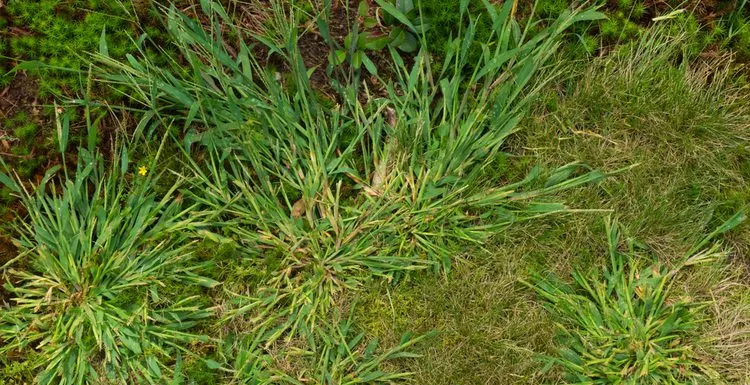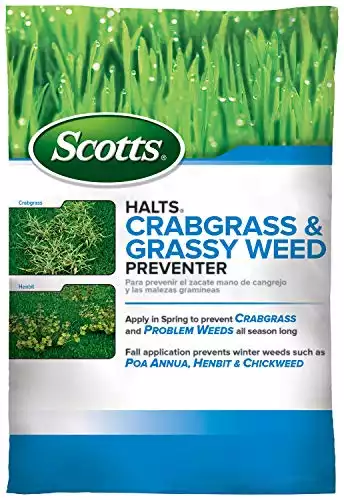Simply put, a crabgrass preventer is any herbicide or method used to prevent the growth and spread of crabgrass.
To control crabgrass growth, there are pre-emergent herbicides, post-emergent herbicides, and physical processes.
What Is Crabgrass?
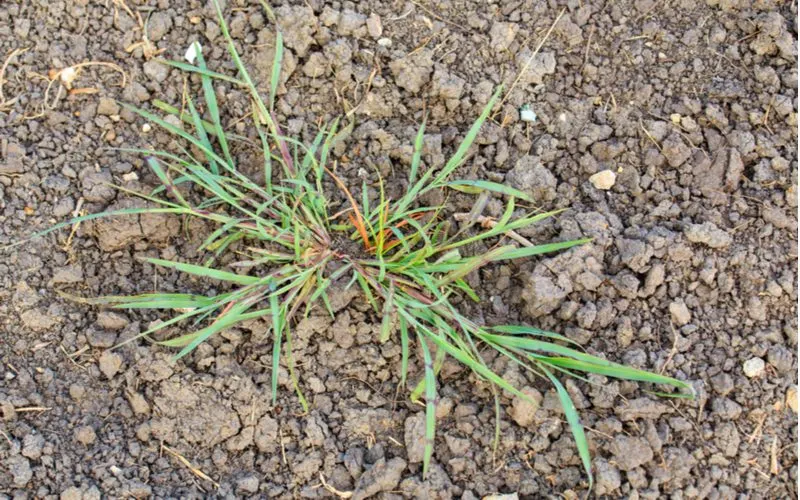
Tricia Daniel/Shutterstock
Crabgrass is plaguing lawns all across the nation. Its ability to adapt and grow in almost any circumstance means that no property is safe from the unsightly weed.
While crabgrass isn’t harmful on its own, it can be detrimental to your lawn. It’s not very pleasant to look at and can take nutrients from other grasses and plants in your yard, potentially crowding them out.
Getting rid of crabgrass is easily done, though, so don’t worry. All it takes is a little bit of time and a good crabgrass preventer.
What Is Crabgrass, and Why Is It Bad for My Yard?
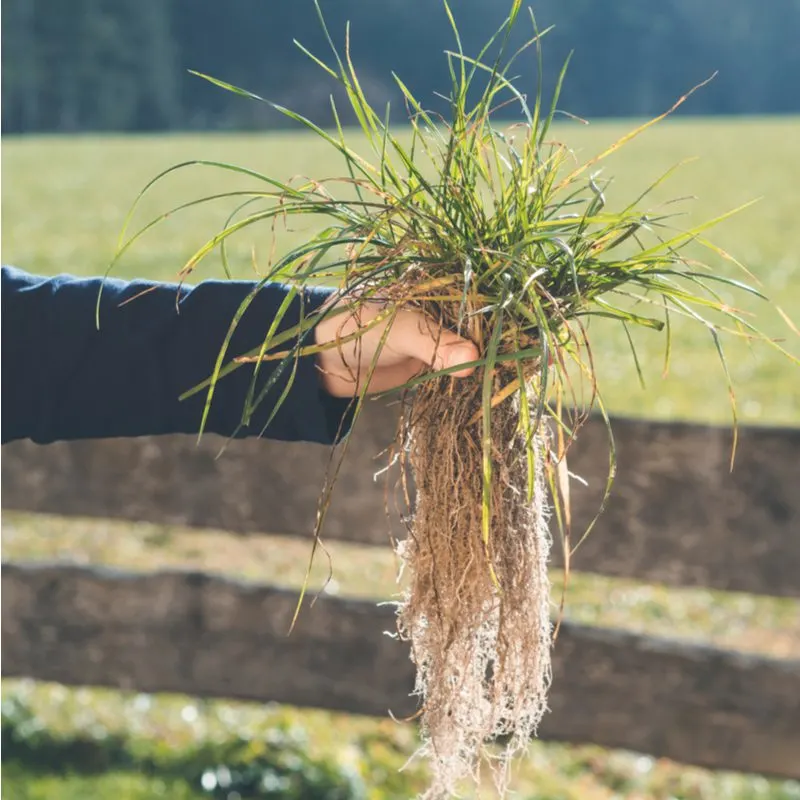
Floki/Shutterstock
Crabgrass, unlike regular turf grass, is a weed that takes over the bare or thin spots in your yard. This ugly, spiky weed will take over your entire lawn if left unbothered.
While turfgrass grows best in the spring and fall, crabgrass thrives in the summer heat. So while your lawn is taking a break, crabgrass is taking the opportunity to spread and flourish.
When crabgrass dies, the plant will spread hundreds, possibly thousands, of seeds across your lawn. These seeds will then lay dormant until they germinate in the spring, and by then, crabgrass could cover your yard.
Crabgrass leaches nutrients from turfgrass and other plants, making your lawn look lackluster.
Crabgrass Prevention Methods
Now that we’ve covered crabgrass and why it’s a threat to your lawn, we’ll cover how to take care of it to keep your yard looking attractive and healthy.
Crabgrass preventers work in one of two ways: preventing the growth of crabgrass or killing the crabgrass once it’s sprouted to prevent it from propagating.
The main types of crabgrass preventers are:
- Pre-emergent crabgrass preventer
- Post-emergent crabgrass preventer
- Seeding and fertilizing
- Watering and mowing frequently
1. Pre-emergent Crabgrass Preventer
The most common crabgrass prevention method is pre-emergent herbicide use. Pre-emergent herbicide stops crabgrass from growing altogether. It’s essential to follow the given directions closely to ensure the best possible result.
It’s essential that you wait until the crabgrass has germinated and before it sprouts before applying a pre-emergent; otherwise, the herbicide will not work, and the crabgrass will grow normally.
You should take extra care to space out the time between seeding your lawn and using a pre-emergent herbicide. If you use a pre-emergent herbicide too soon after seeding your lawn, your turfgrass will die along with any crabgrass.
2. Post-emergent Crabgrass Preventer
While post-emergent herbicides will not prevent current crabgrass from growing on your lawn, they will help prevent crabgrass from seeding and propagating in the future. Post-emergent herbicides are sprayed or applied directly to the weed to kill it.
Using a post-emergent herbicide while the plant is still in its growing stage will produce the best results. Catching the plants in the growing stage is easy to do.
You can check for crabgrass growth each time you mow your lawn. If you wait until the crabgrass is mature to use a post-emergent herbicide, you risk the possibility that the plant has already propagated.
3. Seeding and Fertilizing
Seeding any bare spots on your lawn is a good way to prevent any crabgrass from growing. Crabgrass is opportunistic and takes over any bare spots on your lawn, so a good way to keep it from growing is to fill in any bare-looking spots in your lawn with a turfgrass seed.
After seeding your lawn, it’s important that the plants you’re growing get the nutrients they need. Fertilizing your lawn helps your grass grow strong and thick. The thicker and healthier the grass growth is, the harder it will be for crabgrass to grow.
4. Frequent Watering and Mowing
A great preventative method for avoiding crabgrass growth is to keep your lawn strong and healthy. If there aren’t any bare spots, there’s a much lower chance that your lawn will have any crabgrass to begin with.
You can do this by watering and mowing your lawn frequently. Mow your lawn often so that the grass stays around 3 inches tall, and water frequently, especially if you are in a dry climate, so that your turf grass stays strong enough to fight off any possible crabgrass invasions.
How to Apply Crabgrass Preventer
Now that you know the different types of crabgrass preventers, we’ll cover the application process.
Applying a Pre-emergent Crabgrass Preventer
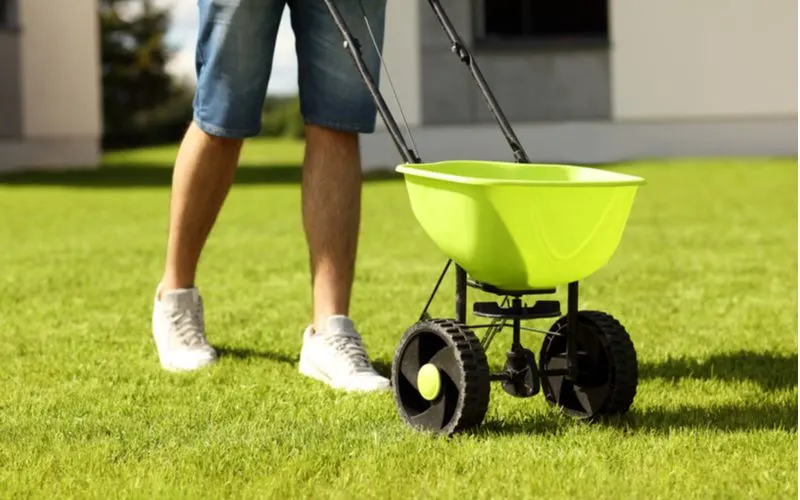
Kamil Macniak/Shutterstock
The perfect time to apply a crabgrass preventer is when the soil has been 55°F for at least three consecutive days. Timing is crucial since crabgrass begins to sprout when the soil rises to temperatures of 65°F or warmer.
If you use a crabgrass preventer too early, then it will have dissolved into the soil before the crabgrass has the opportunity to germinate.
The easiest and most effective way to apply a pre-emergent crabgrass preventer to your yard is to use a garden seeder. Using a garden seeder will ensure that you evenly distribute the herbicide across your entire lawn.
If you have recently applied grass seed to your lawn, then you should wait until you’ve mowed your lawn a few times before applying a pre-emergent crabgrass preventer.
Applying a Post-emergent Crabgrass Preventer
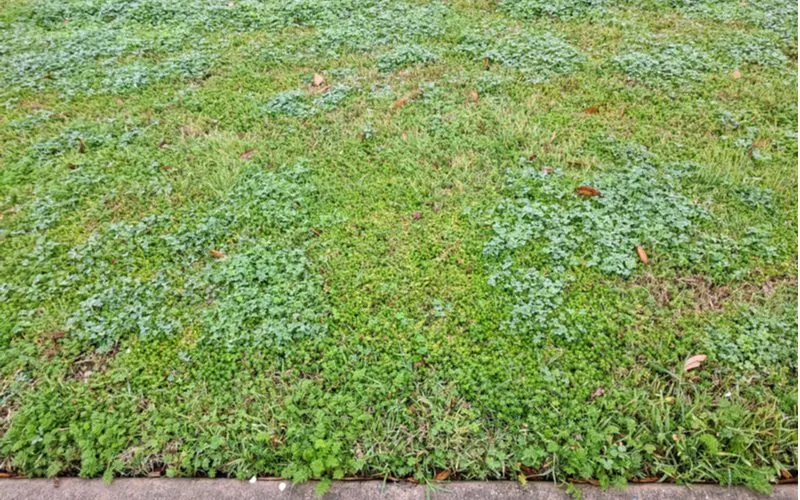
Jasmine Sahin/Shutterstock
A post-emergent crabgrass preventer works just like the one used to kill dandelions. The best time to apply it would be as soon as you notice that the crabgrass has sprouted.
Post-emergent herbicides work best in warm weather. The ideal temperature range is 60°F–90°F, so avoid temperatures that are too cool or too hot.
The best time to use a post-emergent crabgrass preventer is on a clear, sunny day while your lawn is dry with no forecasted rain for a few days. You should make sure that your lawn is moist before applying a post-emergent so that it sticks better to the crabgrass.
Your lawn should remain dry for a few days after application. If your lawn becomes wet too soon after applying a post-emergent crabgrass preventer, then the herbicide will wash away and be ineffective.
You should only apply a post-emergent crabgrass preventer as a spot treatment since applying it to your entire yard could kill your turf grass as well.
Safety Procedures for Applying Crabgrass Preventer
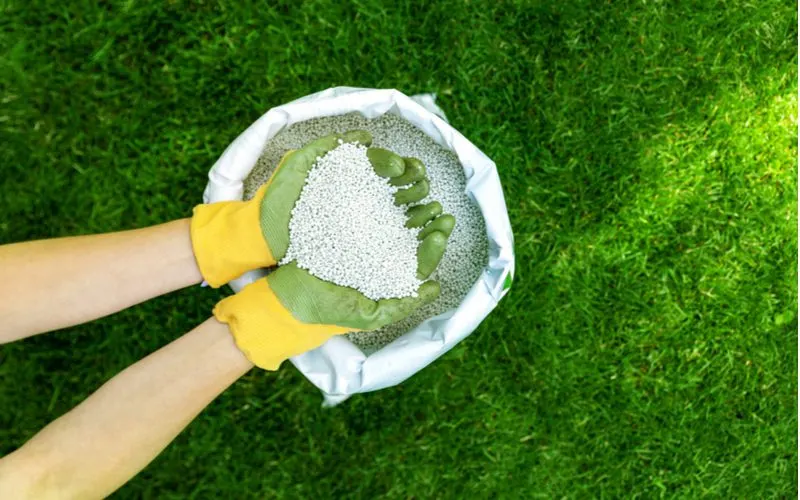
Ronstik/Shutterstock
You should always follow the provided instructions when applying crabgrass preventers. You should take your health and safety very seriously, as well as the safety of your lawn and soil.
When applying crabgrass preventer to your yard, you should:
- Wear protective equipment, like gloves, a mask, and long sleeves
- Wear goggles or protective eyewear
- Avoid aerating the lawn for a while after to prevent herbicides from seeping into your soil and potentially contaminating it
Frequently Asked Questions
Now that we’ve covered what crabgrass is and how to prevent it, you may have some questions. We have answers. Below are some of the most frequently asked questions concerning crabgrass and crabgrass preventers.
Why Is Crabgrass Bad?
Crabgrass is bad for your lawn because it’s an opportunistic weed. It will grow in any bare spots in your yard and steal essential nutrients from the plants and grass you are growing.
Not only will it leach your lawn’s nutrients, but it’s also considered an eyesore to most people.
When Is the Best Time to Apply Crabgrass Preventer?
The best time to apply a pre-emergent crabgrass preventer is in the early spring. Crabgrass begins to germinate when the soil reaches temperatures of 55F for four or five consecutive days.
When Should I Apply a Second Crabgrass Preventer?
After using a pre-emergent herbicide in early spring, you may want to use a second pre-emergent or even post-emergent if you’ve noticed crabgrass growth.
It’s best to wait until around 6 to 8 weeks after the first herbicide application. That way, you don’t accidentally harm any other plants growing on your lawn.
How Does Crabgrass Preventer Work?
Pre-emergent crabgrass preventers inhibit the sprouting process of the weed. Even though the crabgrass will germinate, applying a pre-emergent herbicide will kill the weed completely.
How Long Does It Take Crabgrass to Die After Spraying?
Most crabgrass preventers will kill the weed completely within 2 to 4 weeks of application.
Can I Use Crabgrass Preventer and Grass Seed at the Same Time?
It’s best not to spray a pre-emergent herbicide crabgrass preventer and plant grass seed simultaneously. The crabgrass preventer can kill your grass seed as well if sprayed too close to the time of planting.
So, What Is Crabgrass Preventer?
Simply put, crabgrass preventer is any method used, whether it be herbicide or physical, to prevent pesky crabgrass from taking over your lawn.
Thankfully, the methods are inexpensive and simple, so you can easily keep your lawn looking healthy, beautiful, and crabgrass-free.

